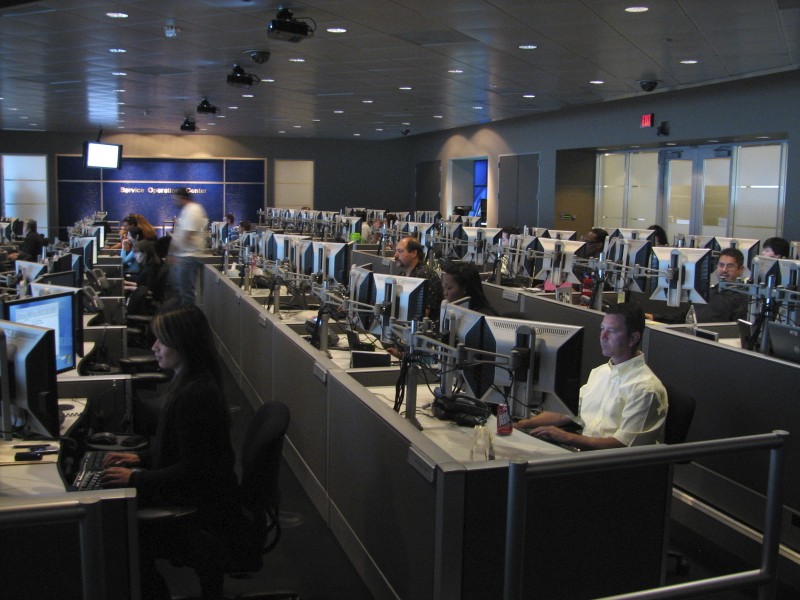Inside Dell's command center

If there’s a hurricane forming in the Caribbean, a major freeway closure in Los Angeles or flight delays out of Chicago, chances are that Jason Allen knows about it.
Allen is in charge of Dell’s five worldwide Global Command Centers, around-the-clock operational centers where technicians are constantly monitoring things like flight delays, traffic jams, weather conditions or even a special event that might impact the company’s ability to handle a support call.
Allen gave me a tour of the facility during a day-long visit this week to the company’s main campus just outside Austin, Texas. As I met with folks throughout the day, there was one thing I continued to hear: tech companies today have very similar offerings from a technology and equipment perspective these days. It takes something different – like a global command center to make sure that service contracts are upheld – to make a company stand out against its competitors.
When customers rely on Dell’s servers and other equipment to keep their data centers running or their e-commerce sites powered, they need quick results from Dell’s service teams when problems arise, Allen said. The last thing a customer wants to hear is that a part is out of stock or that flight delays out of Chicago will delay delivery of replacement equipment. His team is constantly playing a game of chess - managing vendors, parts deliveries, technician dispatches and more - to make sure that these sort of problems don't get in the way of solving the customer's problem.
The command centers are quite a sight to see. They are rows of workstations, set in a stadium setting so that everyone has a clear line of sight to a wall full of screens. Live broadcasts of the Weather Channel and CNN play on some of them. Another has Google Earth fired up, offering overlays of everything from traffic conditions heading to Los Angeles International Airport to the path of a Hurricane barreling its way up the East coast and the times until it hits. (see map image) Other screens offer big-picture or detailed looks at the current support tickets.
On any given day, anything can happen to spark a flurry of activity in the command center. But in most cases, the work being done from the center is proactive, not reactive. Say, for example, the President will be attending a fundraiser in downtown Indianapolis. From a security standpoint, that’s an event that will likely result in road closures and traffic disruptions – something that could keep the UPS driver from reaching a Dell customer.
Armed with that sort of information, technicians in the center can reach out to those customers, inform them of the upcoming event and develop a contingency plan in the event that the customer encounters any problems during that time.
"When service goes down and it’s affecting people, we use every tool to get the problem fixed as fast as possible,” Allen said. “There’s no room for error.”
(Jason Allen, Operations Manager of the Global Command Center, points out details from a customer support ticket being reviewed by technicians.)
